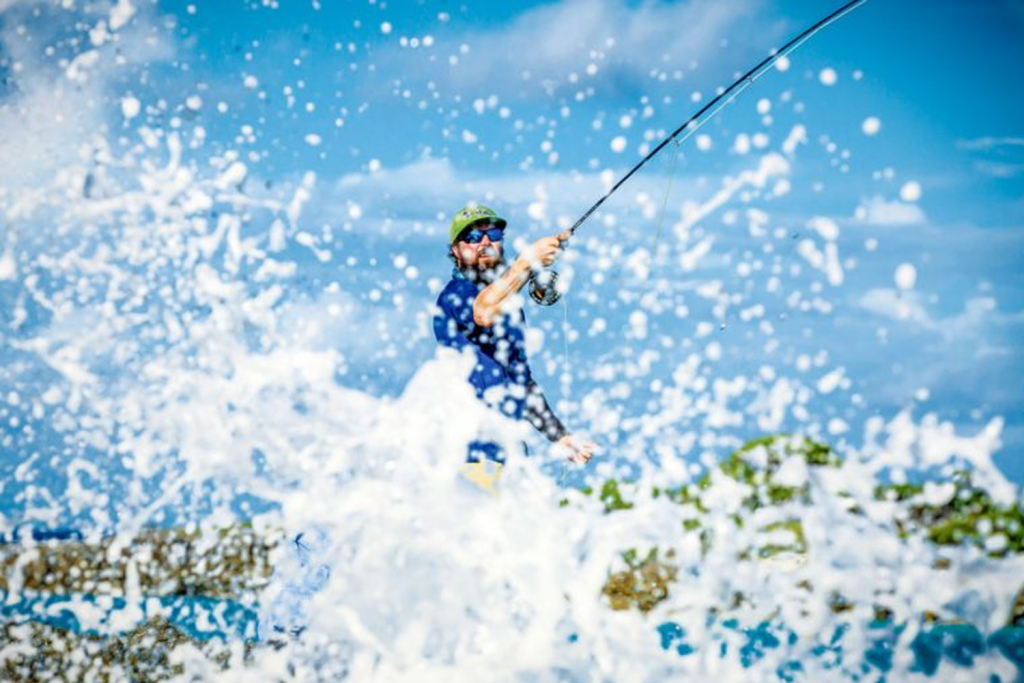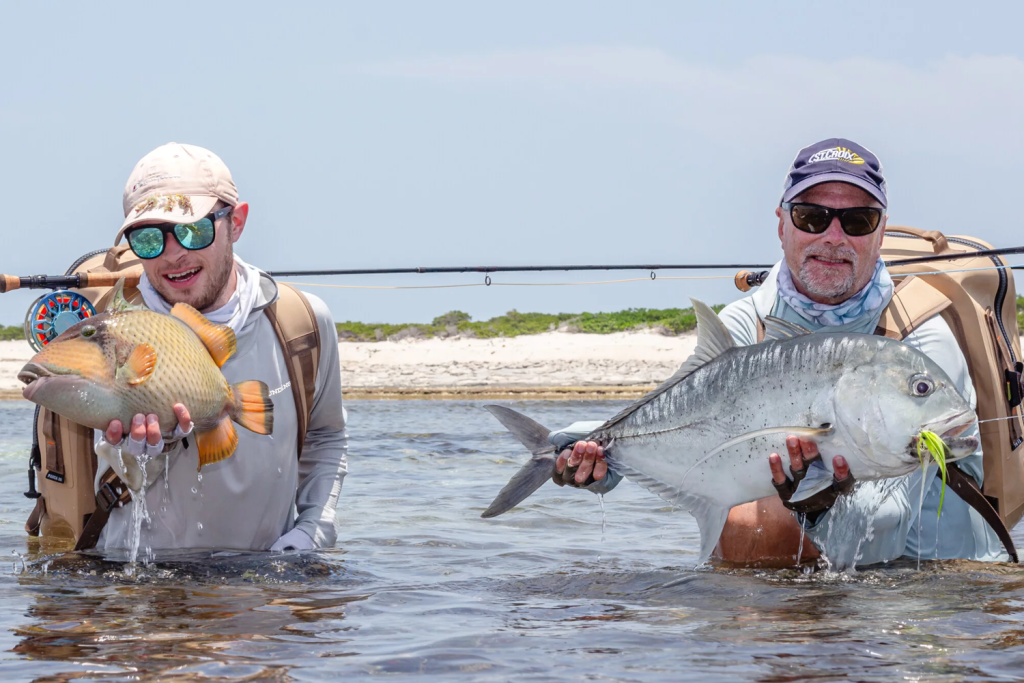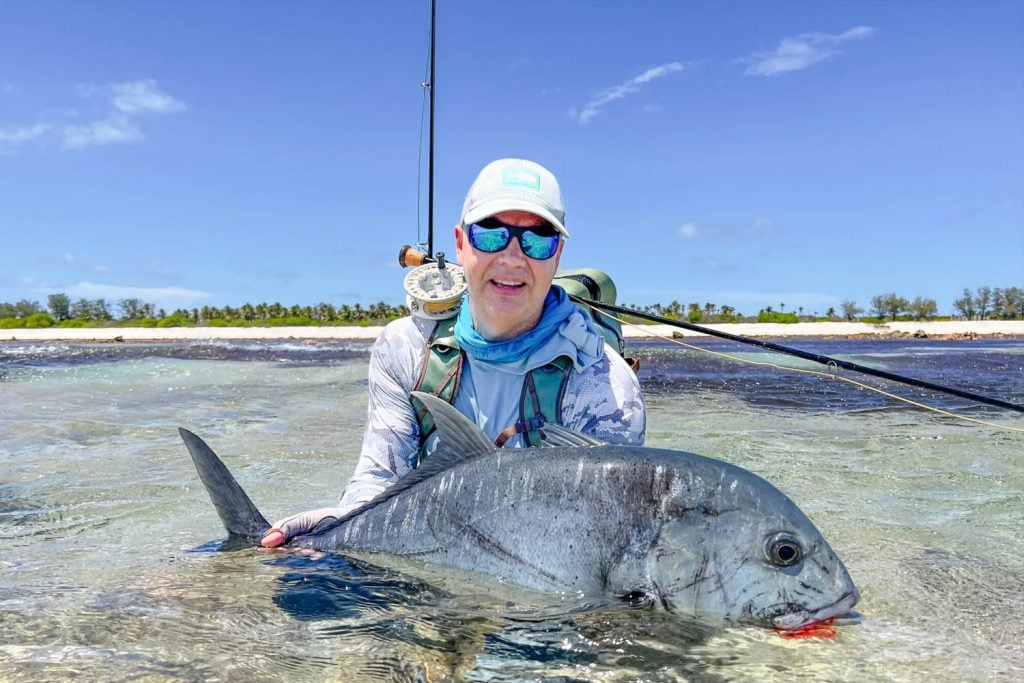

Astove Atoll is situated 1,055 kilometres southwest of Mahe and is just one of the remote jewels scattered throughout the azure waters of the Indian Ocean. It’s a tiny and unique atoll that spans just six kilometres from north to south and just under four kilometres from east to west at the widest point. A raised coral island of most peculiar form, it almost entirely encloses a shallow lagoon of which there is only one exit, a winding passage to the south of the island known as the Gueule Bras Channel. It’s breathtakingly beautiful and a world filled with colour, where the daily drama’s of a pristine ecosystem can play out in front of your eyes. It also offers a rare privileged opportunity to gaze into a world that has changed very little through time.
Astove has a rich but desolate history and has been responsible for numerous shipwrecks dating back to 1500AC. It was also the atoll where Jacques Cousteau filmed some of the acclaimed underwater documentary ‘The Silent World’ along the edge of the “Wall”. The ‘Astove Wall’, which runs the entire length of the Western side of the atoll, is an impressive sheer drop-off and is often described as gazing down into an underwater Grand Canyon. It consists of the large flats and reef dropping a vertical 90 degrees, from ankle-deep water to water well over a kilometre deep. This unique feature makes it one of the most famous dive sites in the world.
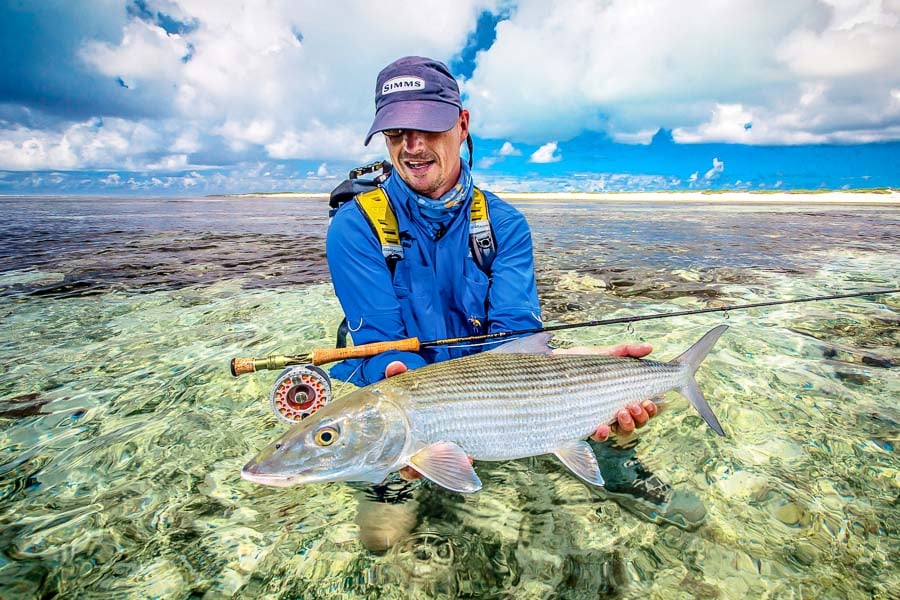

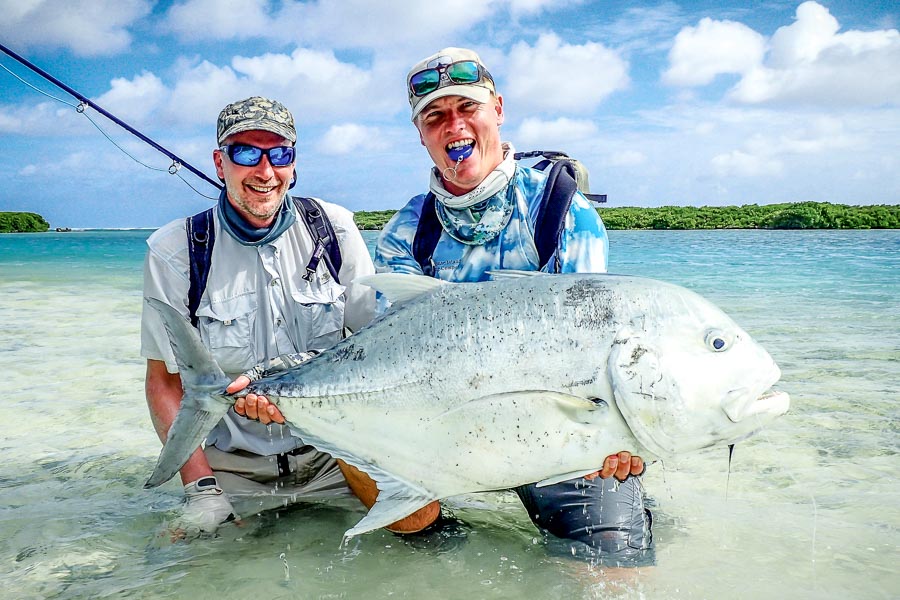

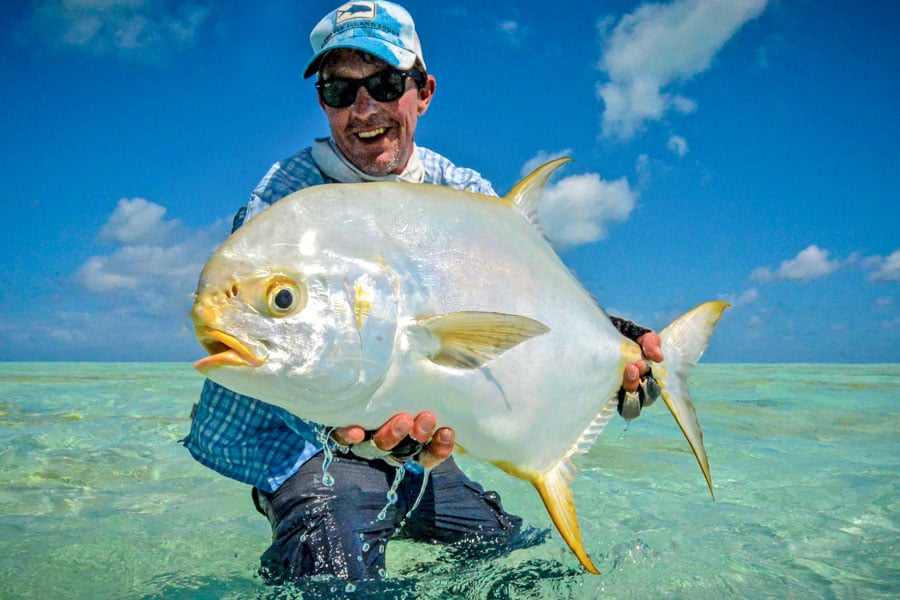

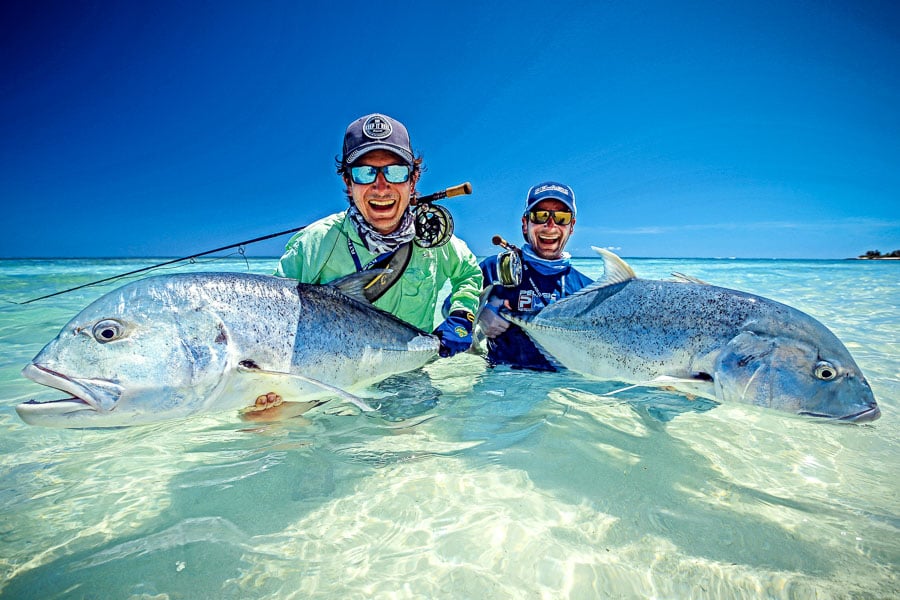

Amongst hardcore saltwater fly anglers, Astove Atoll has become the go-to destination for Giant Trevally, not just in the Indian Ocean but worldwide. It features some of the most impressive populations globally, both in terms of numbers and the sheer size of fish.
Its shallow lagoon – with one small entrance, surrounded by sheer drop-offs – is truly unique. It’s also home to an unusual phenomenon that occurs on every tide cycle. The ebbing tide falls for ten hours of the twelve-hour process, emptying the lagoon, and then the flooding tides fill it back up again in just two. The strong currents created by this create the ideal feeding conditions for all the flats species, especially the GT’s, who prey on the juvenile fish that fill the lagoon. In recent years Astove Island Lodge has produced some stunning results in terms of GT captures. In one week, a group of saltwater fly fishing anglers landed an incredible 92 Giant Trevally, with a staggering 12 of them measuring over the magical 100cm mark. It’s not been usual for competent saltwater flats anglers to land between six and 10 Giant Trevally in a week.
Aside from big GT’s, Astove offers innumerable flats opportunities for Bonefish, Permit, Bluefin Trevally, triggerfish, Barracuda and Milkfish. Offshore fishing isn’t to be ignored either, starting just a few metres from the edge of the flats, it allows anglers to test their skills against Yellowfin Tuna, Dogtooth Tuna, Wahoo and Sailfish.
All Astove Island Lodge trips are led by a team of world-class professional fly fishing guides, who have amassed a very considerable amount of hard-earned experience fishing the waters of the Indian Ocean. Each guide is a qualified skipper, has first aid experience and speaks English. Their passion and dedication is infectious, and rest assured, they will go the extra mile in search of your fish of a lifetime.
Utilizing Mitzi skiffs, specifically designed for fly fishing Astove and moving anglers throughout the fishery, the fishing team usually comprises of two guests fishing with a different guide each day. The fishing itself is a mixture of either wading or fishing from the skiff over larger areas.
For fly fishing, as a general rule, an 8-weight or 9-weight outfit is sufficient for the Bonefish & Permit, whereas a 10-weight or 12-weight outfit is more suitable for the Giant Trevally and Triggerfish.
The bluewater fishing is conducted further offshore on slightly larger 19-foot Mini-Mahe tender boats and uses conventional tackle. However, it is also possible to fly fish using the switch and tease method. Here you can target species like Sailfish and Tuna.
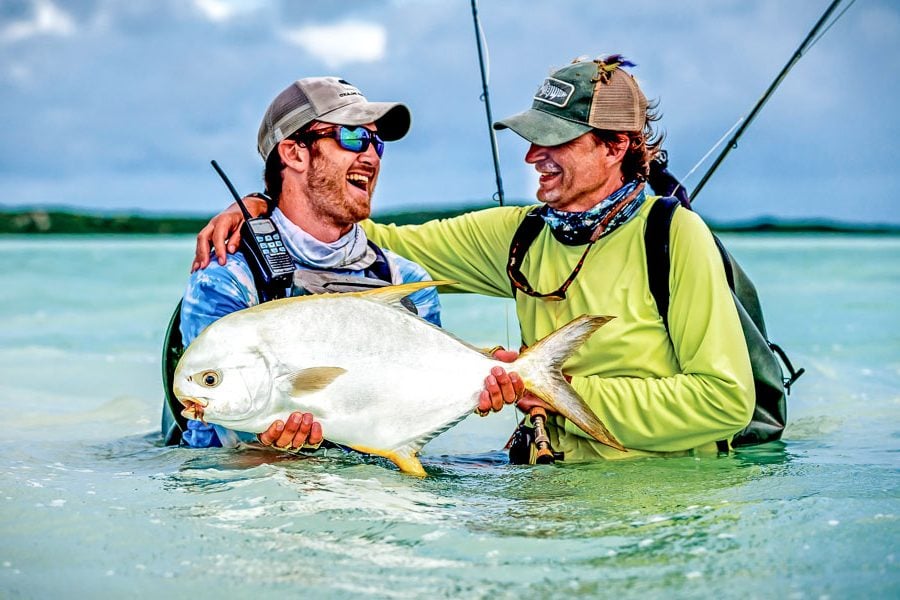

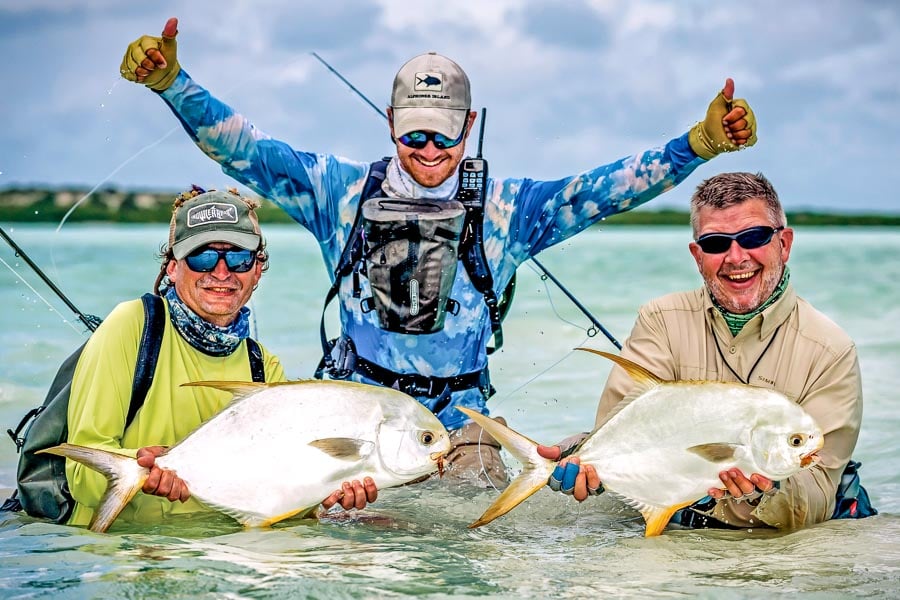

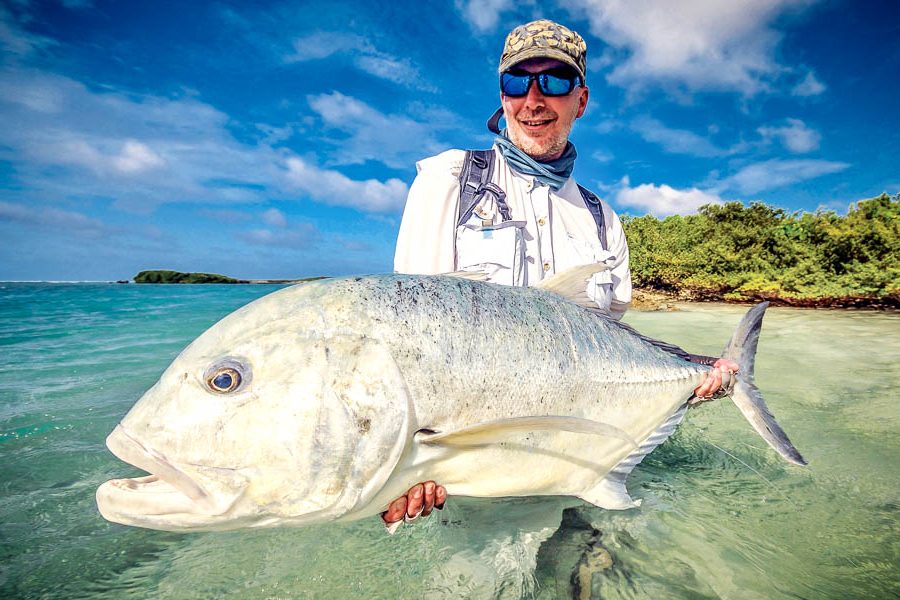



Lying south of the Equator, in the western Indian Ocean, Seychelles has a tropical climate: warm and humid with strong maritime influences. The temperature is consistently around 24-32°C, and there is no distinct dry season.
The fishing lodge is open to anglers from early November to late April, coinciding with the hot and humid northwest trade winds and ignoring the cooler southeast trade winds, that define April through to October. This avoids the irregular weather patterns that the island can sometimes experience during this period. You can, however, enjoy some excellent fishing at any stage during the season.
Weeks with full or new moons tend to be at a premium as the increase in tidal range and flow of water, in and out of the flats, benefit the GT’s that lie in ambush. Sometimes when fishing for the other flats species, the opposites may apply, as many of them form part of the Giant Trevallys diet.
Over a typical six days of fishing, you should always experience a taste of both sets of conditions. This variety is one of the significant attractions of fishing in the Indian ocean.
Uninhabited since 1969, this atoll has seen very little human pressure, something that always makes for a wild experience. Ensuring that the atoll stays pristine, the small coral lodge caters exclusively to only six guests per week. `
The newly renovated building is very comfortable and accommodating and offer its guests six single occupancies, air-conditioned rooms surrounded by a central courtyard. Each private room has its own bathroom, and while the accommodations is basic, the rooms are comfortable and private. In addition to the six rooms, the main lodge area serves as the lodge’s dining room and social space.
The lodge is famed for its attentive service as well as exquisite dining. All meals are served in the lodge’s main dining area, with the chef preparing a mix of Creole and international food. The menu usually comprises of an English breakfast in the morning, a packed lunch choice to take to the flats and a Creole buffet dinner served in the evening in the dining room.
All mineral water and soft drinks are included in the package, and the lodge has plenty of local beer for sale. If you want spirits or any other beverages, we recommend purchasing these at the Duty-Free store in the airport en route.
All Astove trips are seven nights and include six and a half days of guided fishing. Because the island can only be accessed by a charter flight that runs once a week, all packages are fixed at one week in length.
The reason to make the trip to Astove is to fish. There is minimal infrastructure on the island, aside from wading the flats, walking the beach or snorkelling, there’s very little for the non-angler to do.
There is no Wi-Fi or cell reception on Astove. However, the guesthouse is equipped with a satellite phone that can be used by guests if needed.
To find out more about Seychelles and Astove Atoll visit our YouTube channel.
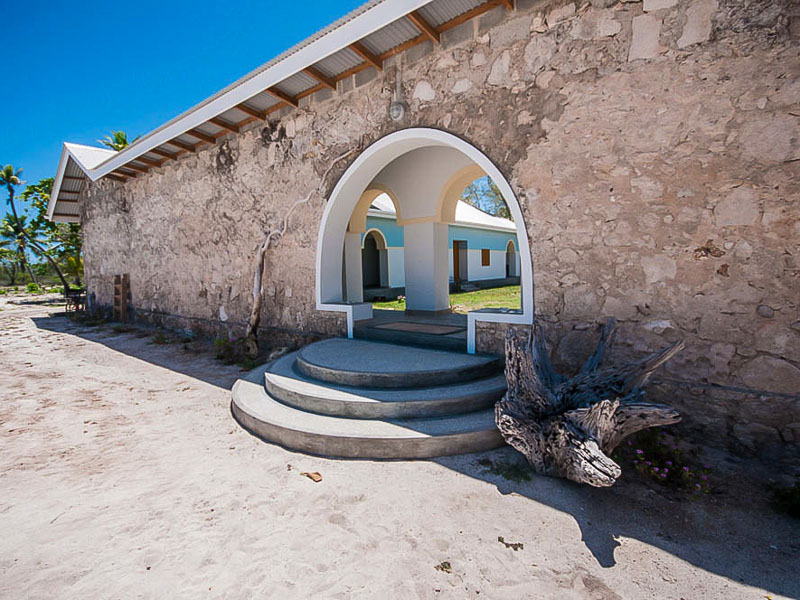

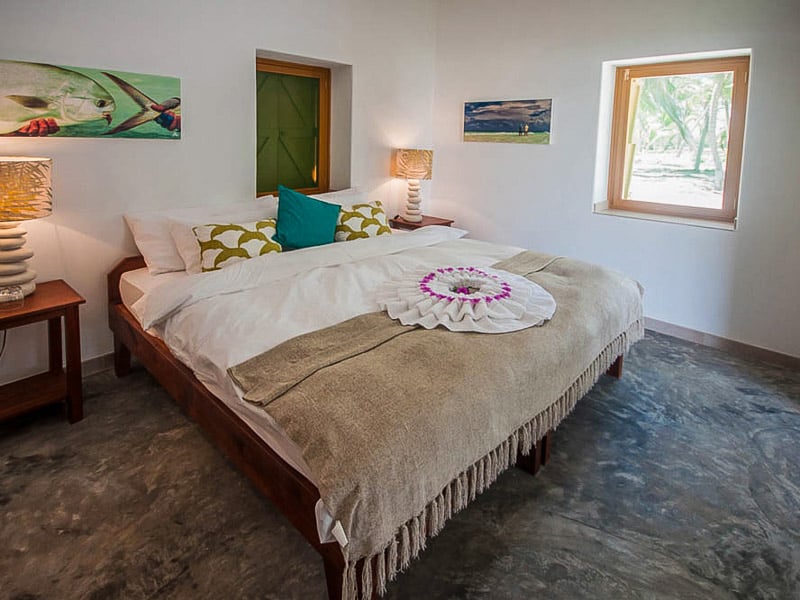

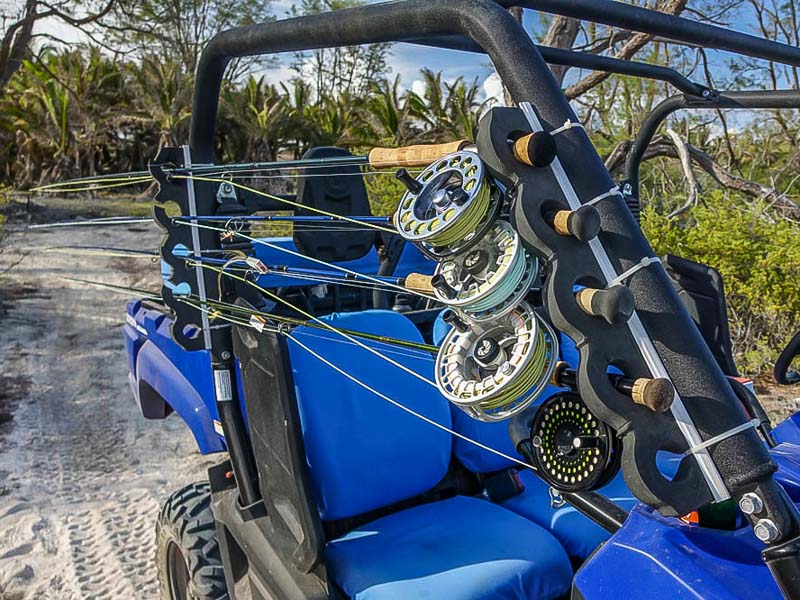



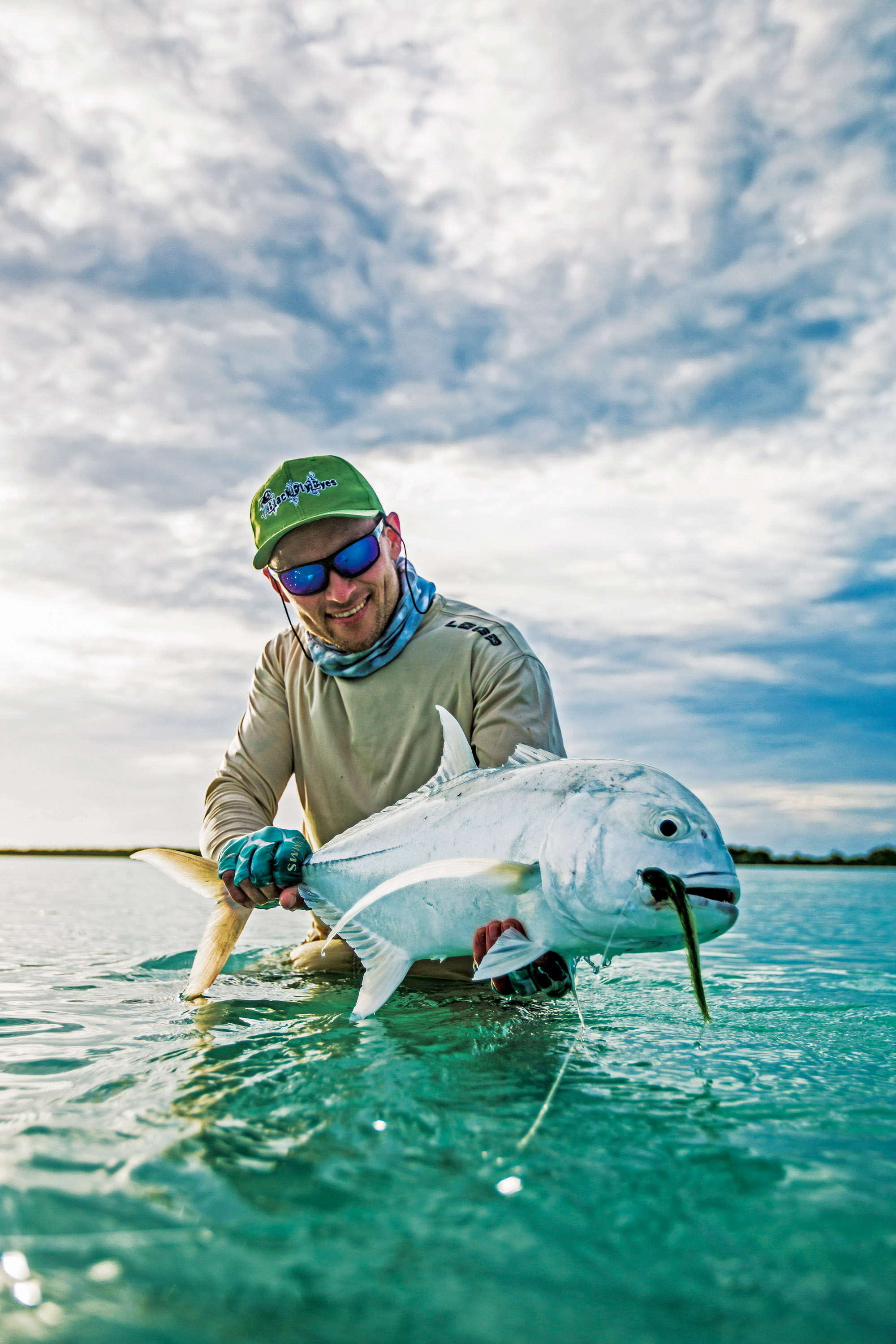

Although the fishing days are fixed, the below itinerary is still flexible should you require additional free days to explore at the beginning or end of your holiday; we can tailor this itinerary to suit you personally. Feel free to talk to our travel consultants who can explain all options available.
Please note that depending on what international airport you depart from, travel to this destination may involve an overnight flight and/or an overnight hotel.
Once flights are available, your itinerary will be finalised.
Depart Any international Airport (See Details)
Arrive Victoria Mahe
Transfer from Mahe airport to your overnight hotel
On arrival in Mahe, once you have collected your bags, you will need to take a taxi (not included) to your overnight hotel.
Overnight Accommodation: Mahe Standard Hotel in a single room on a bed & breakfast basis
Transfer from your overnight hotel to Mahe airport
At a prearranged time you will need to take a taxi (not included) from your overnight hotel back to Mahe airport
Depart Mahe
Arrive Astove
Transfer from Astove airport to Astove Island Lodge
On arrival, you will be transferred to the lodge where the orientation and tackle set-up begins. After lunch, you can start your fishing with an unguided session wading the local flats.
Overnight Accommodation: Astove Island Lodge in a single room on a full board basis
On fishing days one and two, you will get your first taste of the excellent fishing on offer on the flats of Astove. Each day you can wade and sight fish for an impressive variety of species such as Bonefish, various Trevally species including the ferocious trophy-sized Giant Trevally, Permit, Triggerfish, Bumphead Parrotfish and Milkfish.
Overnight Accommodation: Astove Island Lodge in a single room on a full board basis
On your third and fourth fishing days, and throughout your fishing week, you’ll be up early. Breakfast gets served at 7:30am onwards, and you’ll be out on the water from around 8.00am. You will stay out on the flats for the whole day, taking packed lunches with you. There is, however, an option to return to the lodge for lunch before heading out later that afternoon for the second fishing session if you’d prefer.
You will arrive back at the lodge by 17:30pm but are free to continue fishing unguided until sunset.
Overnight Accommodation: Astove Island Lodge in a single room on a full board basis
On your last two fishing days, if there is a species of fish you haven’t caught, but would like to, speak with your guides, and they will do their utmost to make it happen. The guiding team at Astove are world-class and features some of the Indian Ocean’s best. Handpicked locally or from South Africa, each has amassed a very considerable amount of hard-earned experience gained from years and years of fishing the waters in and around the atoll.
Overnight Accommodation: Astove Island Lodge in a single room on a full board basis
Transfer from Astove Island Lodge to Astove airport
On departure day you will be transferred from the lodge back to Astove airport for your return flights.
Depart Astove
Arrive Mahe
Transfer from your Mahe airport to your overnight hotel
On arrival in Mahe, once you have collected your bags, you will need to take a taxi (not included) to your overnight hotel.
Overnight Accommodation: Mahe Standard Hotel in a single room on a bed & breakfast basis
Transfer from your overnight hotel to Mahe airport
At a prearranged time you will need to take a taxi (not included) from your overnight hotel back to Mahe airport.
Depart Mahe
Arrive Home
Please note that depending on what international airport you wish to return to, travel from this destination may involve an overnight flight and/or an overnight hotel. Once flights are available, your itinerary will be finalised.


The season runs from November to April.
Season: Oct to Nov & Feb to April
Peak: Oct to Nov & Feb to April
Weight: 2lb to 9lb
Average Weight: 4lb
Season: Oct to Nov & Feb to April
Peak: Oct to Nov & Feb to April
Weight: 1lb to 17lb
Average Weight: 4lb
Season: Oct to Nov & Feb to April
Peak: Oct to Nov & Feb to April
Weight: 1lb to 20lb
Average Weight: 6lb
Season: Oct to Nov& Feb to April
Peak: Oct to Nov & Feb to April
Weight: 5lb to 50lb
Average Weight: 9lb
Season: Oct to Nov & Feb to April
Peak: Oct to Nov& Feb to April
Weight: 1lb to 25lb
Average Weight: 7lb
Season: Oct to Nov & Feb to April
Peak: Oct to Nov & Feb to April
Weight: 5lb to 120lb
Average Weight: 36lb
Season: Oct to Nov & Feb to April
Peak: Oct to Nov & Feb to April
Weight: 1lb to 40lb
Average Weight: 14lb
Season: Oct to Nov & Feb to April
Peak: Oct to Nov & Feb to April
Weight: 10lb to 50lb
Average Weight: 25lb
Season: Oct to Nov & Feb to April
Peak: Oct to Nov& Feb to April
Weight: 10lb to 100lb
Average Weight: 30lb
Season: Oct to Nov & Febto April
Peak: Oct to Nov & Feb to April
Weight: 10lb to 80lb
Average Weight: 30lb
Season: Oct to Nov & Feb to April
Peak: Oct to Nov & Feb to April
Weight: 50lb to 100lb
Average Weight: 80lb
N/A
Remember that Sportquest Holidays' services are completely FREE! When you book a trip with Sportquest Holidays, you never pay more than when you book directly with the lodge and flights independently.
| From | To | Duration | Price | Availability |
|---|---|---|---|---|
| 01/11/2025 | 11/11/2025 | 11 | £14,360 | Sold Out |
| 08/11/2025 | 18/11/2025 | 11 | £14,360 | Sold Out |
| 15/11/2025 | 25/11/2025 | 11 | £14,360 | Sold Out |
| 22/11/2025 | 02/12/2025 | 11 | £14,360 | Sold Out |
| 29/11/2025 | 09/12/2025 | 11 | £14,360 | Sold Out |
| 06/12/2025 | 16/12/2025 | 11 | £14,360 | Sold Out |
| 13/12/2025 | 23/12/2025 | 11 | £14,360 | Sold Out |
| 20/12/2025 | 30/12/2025 | 11 | £14,360 | Sold Out |
| 27/12/2025 | 06/01/2026 | 11 | £14,360 | Sold Out |
| 03/01/2026 | 13/01/2026 | 11 | £14,603 | Sold Out |
| 10/01/2026 | 20/01/2026 | 11 | £14,603 | Sold Out |
| 17/01/2026 | 27/01/2026 | 11 | £14,603 | Sold Out |
| 24/01/2026 | 03/02/2026 | 11 | £14,603 | Enquire Now |
| 31/01/2026 | 10/02/2026 | 11 | £14,603 | Enquire Now |
| 07/02/2026 | 17/02/2026 | 11 | £14,603 | Enquire Now |
| 14/02/2026 | 24/02/2026 | 11 | £14,603 | Enquire Now |
| 21/02/2026 | 03/03/2026 | 11 | £14,603 | Enquire Now |
| 28/02/2026 | 10/03/2026 | 11 | £14,603 | Enquire Now |
| 07/03/2026 | 17/03/2026 | 11 | £14,603 | Enquire Now |
| 14/03/2026 | 24/03/2026 | 11 | £14,603 | Enquire Now |
| 21/03/2026 | 31/03/2026 | 11 | £14,603 | Sold Out |
| 28/03/2026 | 07/04/2026 | 11 | £14,603 | Sold Out |
| 04/04/2026 | 14/04/2026 | 11 | £14,603 | Sold Out |
| 11/04/2026 | 21/04/2026 | 11 | £14,603 | Sold Out |
| 18/04/2026 | 28/04/2026 | 11 | £14,603 | Sold Out |
| 31/10/2026 | 10/11/2026 | 11 | £14,603 | Sold Out |
| 07/11/2026 | 17/11/2026 | 11 | £14,603 | Sold Out |
| 14/11/2026 | 24/11/2026 | 11 | £14,603 | Sold Out |
| 21/11/2026 | 01/12/2026 | 11 | £14,603 | Sold Out |
| 28/11/2026 | 08/12/2026 | 11 | £14,603 | Sold Out |
| 05/12/2026 | 15/12/2026 | 11 | £14,603 | Sold Out |
| 12/12/2026 | 22/12/2026 | 11 | £14,603 | Sold Out |
| 19/12/2026 | 29/12/2026 | 11 | £14,603 | Sold Out |
Prices are based on two adults sharing transfers, fishing and accommodation in Mahe and single accommodation on Astove (unless otherwise stated) and are correct at the time of going to press. Subject to time of year or date and currency fluctuations, these prices may fluctuate slightly due to flight price increases or fuel surcharges.
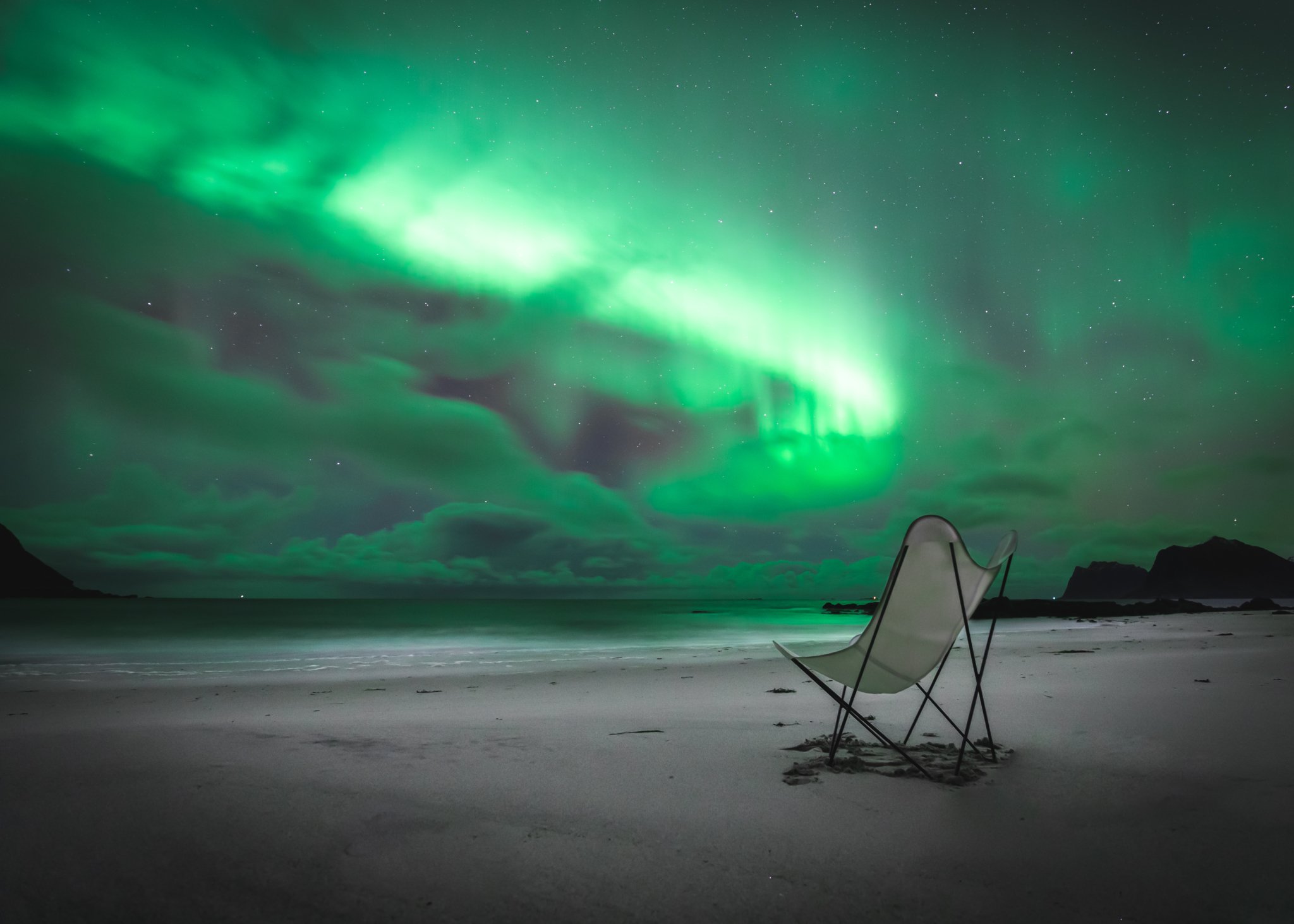

It may take a while to travel there, but for me, it was worth every second in the air and on land, as it was simply incredible. The accommodation in Astove was a beautiful as the surroundings and was the perfect base to fish from. A huge shout out to my guide too, he was fantastic.
The fishing on Astove was simply mind-blowing. We landed numerous Bonefish, GT's, Milkfish and even Triggerfish. It seemed whatever we wanted to catch the guides could take us to a flat where it was possible. I loved every second of my trip from start to finish, a massive thank you to everyone involved in making it possible.
The most beautiful destination I've ever visited by some considerable margin. I've been lucky enough to visit a few flats fishing destinations and I'd even probably go as far as to say that this was the best fishing I've ever experienced.
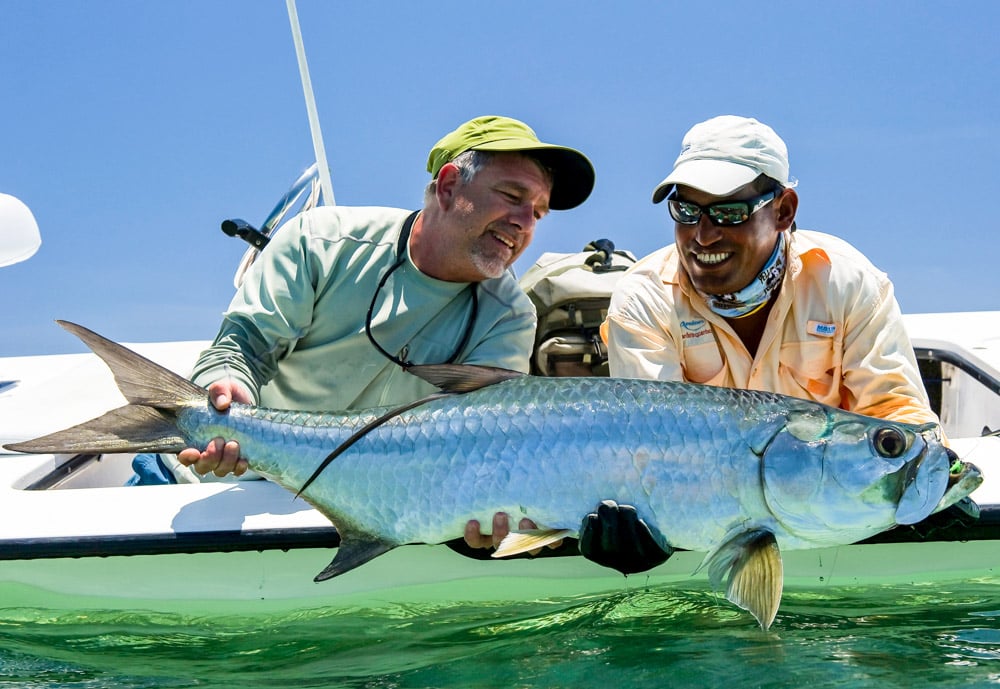

Think about a place where you can fish more than 100 miles of flats without seeing another fisherman. A place where the flats fishing is so good, you can catch seven fish species in one day and a place where you have a legitimate chance for a ‘Grand Slam’ every day of the year; that’s Canarreos.


Cayo Paredón is the hottest, newest destination in the portfolio of our partners Fly Fishing the Run. Located in the province of Camaguey, the easternmost, most significant and flattest region in the centre of Cuba, it's a saltwater fly fishing paradise, home to all the 'Grand Slam' species.
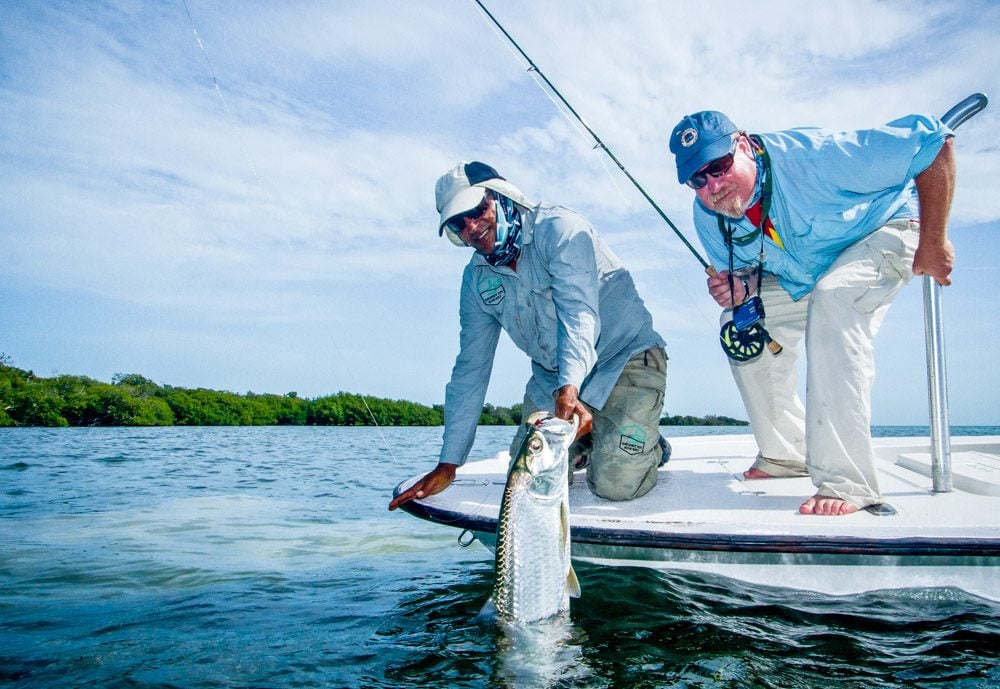

With only eight anglers allowed to fish the thousands of kilometres of waters in and around Zapata each week, many area's have never seen an angler. From a saltwater fly fishing perspective, the destination is in its infancy and is remarkable and a real jewel in Cuba's ecological crown.
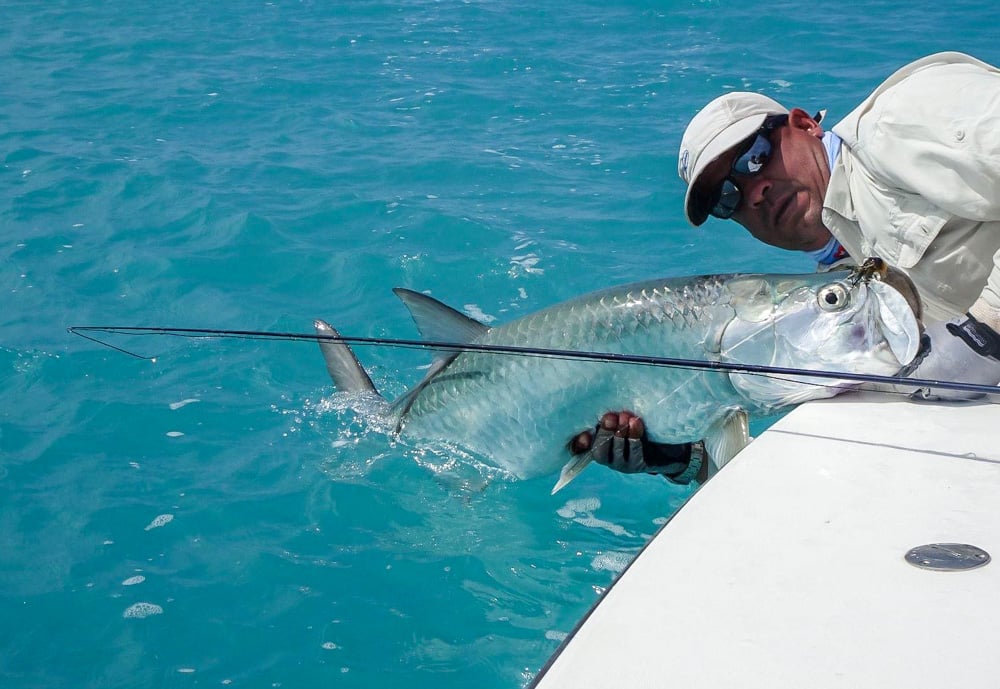

Cayo Romano is the latest most exciting saltwater fishing locations to become available to ardent fly-anglers. Located on the North Coast of Cuba in the Jardines de Rey, it consists of a huge fishable area, which provides incredible opportunities for big Permit, alongside some really exciting Tarpon fishing on the flats.


The Gardens of the King or Cayo Santa Maria is one of the most precious spots in Cuba and the Caribbean. Renowned as a Tarpon paradise, it's now viewed as one of the best destinations in the Caribbean for catching big Tarpon on the fly. As well as the big Tarpon, it's also home to all the traditional flats species like Bonefish, Permit and Snook.
